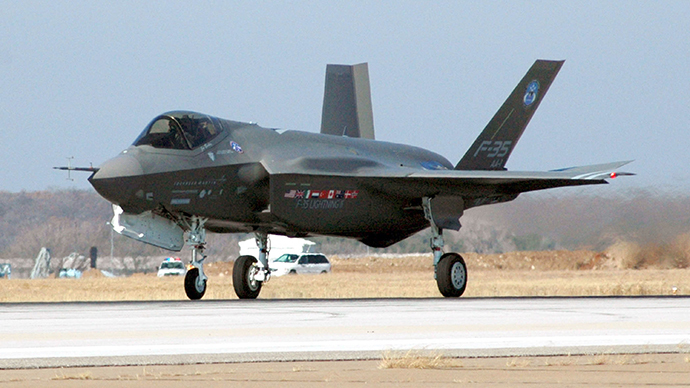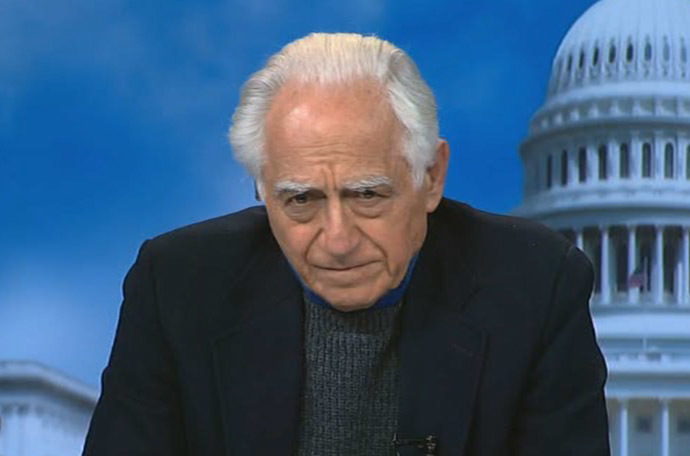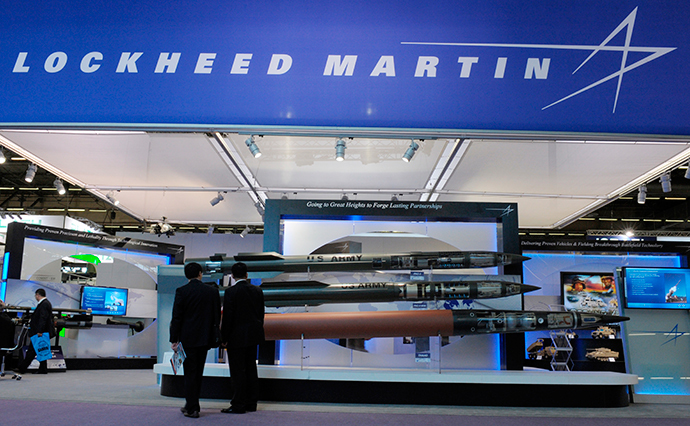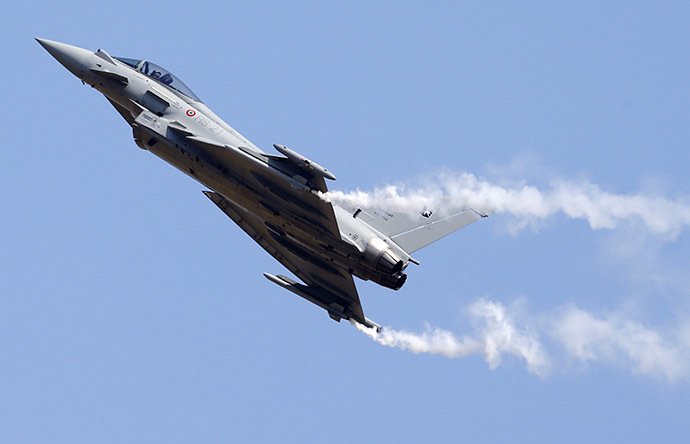‘Every F-35 a country buys from Lockheed Martin damages its defense’

The Lockheed Martin F-35 Lightning II is a poorly designed warplane that the company manages to sell through brilliant marketing and political clout, says defense analyst Pierre Sprey. Each one bought is a strike to a nation’s airpower.
Sprey, a longtime critic of the F-35, helped design F-15 Eagle for McDonnell Douglas. He shared with RT why he believes the Lockheed Martin is a bad bargain for customers.
RT: So, could you tell us why the F-35 has sparked so much criticism? It seems to be multirole: close support, air-to-air, bombing, reconnaissance. So it all looks very strong…
Pierre Sprey: The criticism is highly justified. The airplane was indeed sold to do close support, deep strike bombing and air-to-air. It is in fact is extraordinarily ineffective at all three. It is a very badly designed airplane because it was started with the very bad mission specification many-many years ago – ancient years ago.
The design concept was started in the mid-1980s – can you imagine that long ago. And the airplane is simply overtime, it is required more and more electronics, more and more multi missioned tasks, it has gotten worse and worse. And today it is way behind current European fighters and no doubt Chinese and Russian fighters in air capability.
It is not a capable air-to-air fighter: it is too sluggish, it can’t accelerate, the maneuverability is awful, the wing is much too small to maneuver and fuel is quite limited, the range is pretty bad.

In deep bombing missions it first of all doesn’t carry very much because the stealth requirements forced it to carry all the payload internally which makes it nearly a useless bomber right away. The range is very limited, poorer then alternative airplanes both European and American alternative airplanes.
Worst of all, the airplanes are extremely vulnerable. It is probably the most flammable airplane we’ve built in long time. It is like an explosion waiting to happen. If it gets hit by anything – even relatively small antiaircraft fighter much less by small missiles – it is simply gone.
And then the price is out-of-sight, ludicrously expensive. The program unit cost is running on average now around $235 million. For a complete airplane for the ground version – the land version that most European countries are interested in except England – the price will be at least $170-200 million just for the airplane. Double that for the package when you need to buy it and get all the ground equipment and all the weapons that go with it. This is unaffordable by essentially any country in Europe.
And of course it causes tremendous political upheavals because of that in almost every buying country.
RT: So why is it being produced then? Who benefits from it?
PS: It is successful because Lockheed is an extremely effective marketing organization. They are not very good at designing airplanes but their marketing is unbelievable. It is a juggernaut like you can’t believe. And of course they have the support of the US government to help to put even more pressure among nations that might be customers.

RT: The US forces buy it for their needs, but other countries like Australia, Israel, as well as NATO-members are buying it as well. Why's that?
PS: Because Lockheed is a tremendously effective marketing organization and they acquire all kinds of political influence both through the route of politics of the country, contributing to parties, through retired officers, and through their own marketing organization which is extremely effective. It is an amazingly good marketing organization backed by a company that doesn’t build very good airplanes.
RT: So do you think Lockheed Martin is heavily backed by the US government?
PS: Heavily backed by the US government. And because it is a part of Lockheed marketing they have enormous influence in the American government, tremendous influence around the Congress and equally great influence in the Pentagon, among the military services, and on the political level of the Pentagon also – and all the way to the White House. They are very, very powerful in their marketing, very big, effective company when it comes to sell their products. And they do it through politics.

RT: Is it really in the best interests of EU countries to buy F-35?
PS: It is very much against their interest as it is against the interest of the US. Every extra F-35 that is bought by a European air force or by an American air force decreases the effectiveness of their airpower because it displaces airplanes that can do the same mission better.
RT: Do you think the US F-35 is destroying the defense industries of Europe?
PS: Of course the F-35 is destroying the defense industries of Europe. They make promises, they have all these wonderful offset agreements where they give a little production here, and a little production there – and that is a part of very brilliant marketing. A lot of the marketing is done through the companies that they have influenced.
But in fact what they are doing is they are siphoning off money that could be supporting the national industries and they are helping to reduce them to satellites, their puppets.
The statements, views and opinions expressed in this column are solely those of the author and do not necessarily represent those of RT.
The statements, views and opinions expressed in this column are solely those of the author and do not necessarily represent those of RT.












